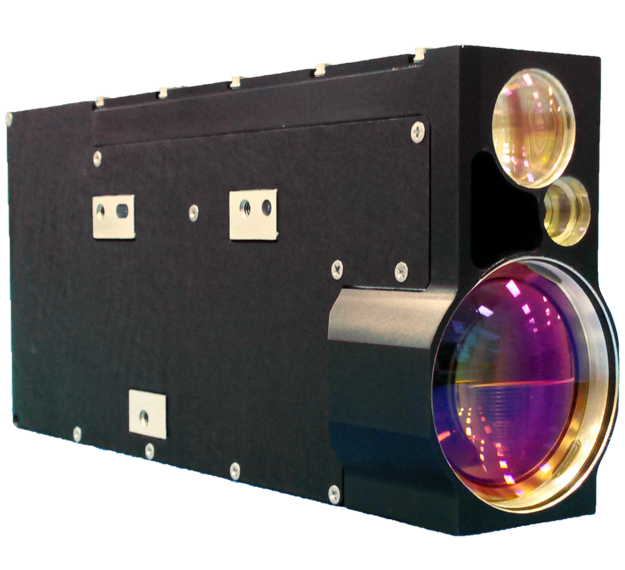Safe Laser Low-Level Laser Therapy (LLLT) aids in healing wounds that are ulcerative by stimulating the repair of tissues. LLLT stimulates cellular metabolism which results in accelerated healing and tissue repair. It stimulates fibroblast, collagen, and angiogenesis processes (formation of blood vessels) which are all important for wound healing. This may speed up the healing of ulcerative wounds.
LLLT can decrease inflammation by blocking the release of pro-inflammatory cytokines. It also aids in the production of antiinflammatory mediators. LLLT has anti-inflammatory effects in ulcerative lesions, where inflammation can delay healing or worsen tissue damage.
Pain relief LLLT alters the perception of pain through the nerve conduction. It also reduces the release of pain-related mediators like substance P. In the case of ulcerative injuries, that are frequently associated with pain and discomfort, LLLT may help relieve pain and improve overall experience.
Increased Blood circulation LLLT stimulates vasodilation and microcirculation. This leads to the increase of blood flow to the wound. Increased blood circulation provides nutrients and oxygen to the tissues, which aids in healing and facilitating the removal of the waste products and toxins that accumulate in the area of wound.
Antimicrobial Effects - LLLT has been proven to have antimicrobial properties which can lower the risk of infection for ulcerative lesions. LLLT reduces the risk of infection, and also speeds up healing by promoting bacterial removal and preventing colonization at the wound.
Reduction of Scar formation- LLLT could help minimize the appearance of scars from ulcerative injuries by promoting a healthy tissue renewal and remodelling. Through stimulating collagen production fibers and encouraging alignment of collagen packages, LLLT can help in the production of stronger scar tissue.
Overall, Safe Laser low-level laser therapy offers an uninvasive and drug-free solution to managing ulcerative wounds, promoting speedier healing, less discomfort, and better overall wound outcomes. However, it's important to speak with a healthcare expert for the proper treatment of wounds and treatment recommendations before using LLLT for ulcerative wounds. Have a look at the recommended safe laser 1800 for blog tips including lágylézer vásárlás, safe laser bérlés, lágylézer készülékek, laser kezelés, lágylézer vásárlás, laser lézer, lézer kezelés hatása, lágylézer ár, lágylézer kezelés, otthoni lézer kezelés and more.

What Is Safe Laser Low-Level Therapy (Lllt) Help In The Treatment Of Ear Problems?
Low-level laser therapy (LLLT) can help with a variety of ear issues through several mechanisms. Reduced inflammation - LLLT's anti-inflammatory properties can help reduce the inflammation of the ear canal or middle ear. For conditions such as Otitis externa (inflammation of the ear's outer canal) or Otitis media (middle ear infection), LLLT can help alleviate inflammation and associated symptoms like swelling and pain.
LLLT helps to relieve the pain associated with ear disorders like otitis, earaches and otitis.
Improved Tissue Repair and Regeneration- LLLT increases the rate of the process of tissue repair and renewal by enhancing the cellular metabolism. LLLT aids in quicker healing of damaged tissues when conditions arise, such as otitis, eardrum ruptures, or the otitis.
LLLT Improves Blood Circulation LLLT stimulates microcirculation aswell vasodilation. This leads to increased blood flow for the tissues of the ear. Increased blood flow is able to transport nutrients and oxygen to injured and inflamed tissues, which aids in healing and decreases inflammation.
Tinnitus Management- LLLT is being investigated as a possible treatment for tinnitus. Tinnitus is characterized by ringing and buzzing in the ear. While the exact mechanism is not completely understood, LLLT may help improve blood flow and decrease inflammation in the auditory system, leading to a reduction in tinnitus symptoms.
LLLT helps reduce earwax accumulation within the ear canal. It also helps to break down earwax and reduce the risk of ear infection and blockage. It is particularly helpful for people who have excessive earwax and those who experience earwax impaction.
Overall, safe Laser low-level laser therapy provides a non-invasive and drug-free approach to treat a variety of ear issues, providing relief from symptoms like inflammation, pain, and earwax buildup. Before applying LLLT for treating ear issues you must consult an ENT specialist. They will give you the right diagnosis and recommendations for treatment. Have a look at the recommended
safe laser bérlés for site examples including lágylézer kezelés budapest, lágylézer kezelés, lágylézer készülékek, lágy lézer, lágylézer kezelés árak, lágylézer árak, lágylézer kezelés, safe laser használata, lágylézer készülék bérlés, lágylézer árak and more.

How Long Will It Take Before The Effects Of A Secure Laser Can Be Felt In Acute Situations.
Safe Laser can be used to treat ailment that is acute. The number of sessions needed to achieve outcomes is dependent on the severity of the condition as well as how the individual responds to treatment, and the procedure a doctor recommends. LLLT may provide quick relief for acute illnesses. This includes recent inflammations or injuries, as well as acute pain episodes. In some cases individuals might notice less swelling, pain and inflammation following just one or a couple of LLLT sessions. For long-lasting and lasting results, it's usually recommended to go through a series LLLT sessions.
The frequency and duration of LLLT sessions needed to treat acute ailments varies on the nature of the condition as well as the severity and reaction of the patient to the treatment. The treatment regimen is generally specific to the patient, and can include scheduling LLLT treatments several times per week for a specific time frame.
If you'd like to reap the full advantages of LLLT treatment, you must to follow your healthcare provider's prescribed treatment plan. Participate in every scheduled LLLT sessions. In addition, people might see improvements in their condition as time passes with ongoing treatment. If there are any concerns or questions regarding the treatment plan or progress it is important to discuss them with your healthcare professional.